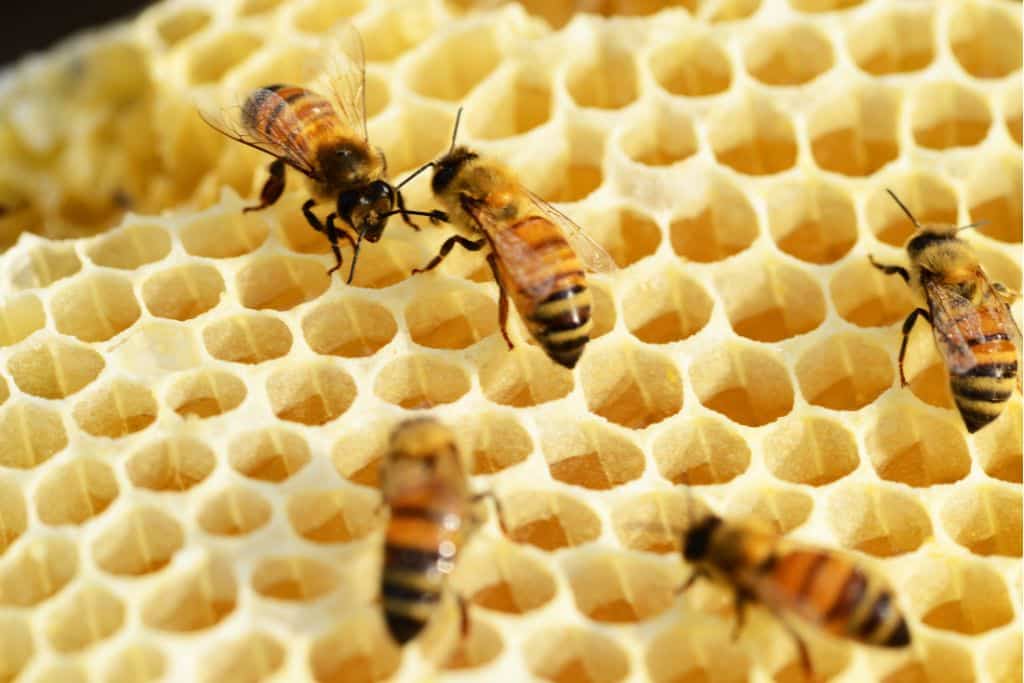The ‘Elephants & Bees’ project gives us a prime example of how a single person’s ingenuity and passion can result in brilliant wildlife conservation solutions.
—
Why Are African Elephants Endangered?
As one of Africa’s ‘Big Five’, it comes as no surprise that elephants are an extremely important species. In addition to being massively charismatic animals, they serve vital roles in their ecosystems as seed dispersers and landscape architects. Hence, the fact that these icons of natural power are under grave threat is troubling. With increases in poaching and habitat loss, African elephant populations have been declining at alarming rates. African savanna elephants (Loxodonta africana) have seen a decline of over 60% in the last 50 years, while African forest elephant (Loxodonta cyclotis) populations have declined over 86% in the last 31 years. Worryingly, both species of African elephant have recently been listed as Endangered and Critically Endangered on the International Union for Conservation (IUCN) Red List, with only around 415,000 left in the wild.
The struggle to conserve elephant populations is only worsened by widespread human-wildlife conflict, particularly around farmland. Human-wildlife conflict is one of the greatest unresolved conservation challenges of our time. This conflict negatively affects species survival, damages tolerance towards coexistence and creates strained relationships with wildlife managers. Due to their keen sense of smell, elephants are adept at locating crops, creating a conflict with the farmers who rely on such crops to earn a living. Multiple mitigation efforts have been attempted, but each have their weaknesses. For instance, electric fencing surrounding national parks are expensive and prevent species dispersal, whereas smaller-scale deterrents can also lead to farmer fatigue and elephant habituation. It was in this context that Dr. Lucy King from the University of Oxford proposed a radical new solution.
You might also like: Endangered Animal Spotlight: The Asian Elephant
The Solution
Dr. King was born and raised in Africa. As a kid, she would often go camping in the wild, and the electrified elephant fences stuck out to her. She would go on to devote her research to finding a more holistic and beneficial method to mitigate conflict. Based on her conversations with Kenyan rural pastoralists, she learnt tales in which elephants showed particular aversion to trees with beehives. She put this theory to the test in a 2007 study, playing audio of disturbed bees through speakers near elephants, and found that there was truth to the claims. Following this study, she won the UNEP/CMS Thesis Award 2011 for her doctorate thesis “The interaction between the African elephant (Loxodonta africana africana) and the African honey bee (Apis mellifera scutellata) and its potential application as an elephant deterrent,” in which she outlined her ambitious idea – beehive fences. They proved to be a huge success.
Beehive fences are relatively cheap fences consisting of wooden poles and plain wire (or even string), with active and “dummy” beehives interspersed around the perimeter. Elephants that try to break the fence are met by swarms of disturbed bees, which act as a biological deterrent. Bee stings targeted around the eyes, behind the ears, and even up the trunk can cause great irritation. The dummy hives serve to trick the elephants into thinking the threat is greater than it was, whilst helping to reduce the costs by making fences unnecessary. Just as elephant matriarchs can remember which paths to follow year after year, they can also remember where bees are located, meaning they would not return to farms protected by bees.

Photo by Wikimedia Commons.
Are Beehive Fences Really Working?
In the years since their initial implementation, beehive fences have shown outstanding results. After a 43-month trial of the fences in Kenya, 80% of the 253 approaching elephants were kept out of the protected farms, and elephants that broke a fence were in smaller than average groups. Not only did the fences work at preventing human-wildlife conflict, but the farmers also saw additional financial benefit, as they were trained in beekeeping and benefited from the sale of 228 kilograms of “elephant-friendly honey”, resulting in $1,134 of profit. Honey sales provided farmers with an alternative income stream and promoted the mission to buyers. The fact that the bees not only protected, but also pollinated the crops further impassioned farmers into adopting the same strategy.

Figure 1: Beehive fences as a multidimensional conflict-mitigation tool for farmers coexisting with elephants. Conservation Biology, 31(4), pp.743-752.
As news of the success of the trial spread, a further 12 farmers requested to join the project. This widespread adoption only continued. Due in large part to the fact that beehive fences are cheap to construct (approximately $1,50 to $5,00/metre), implementation of these fences spread to various other African countries and is even being put to use in Asian counties such as India and Thailand. The idea has received massive acclaim, winning multiple awards such as the Future for Nature Award 2013 and St Andrews Prize for the Environment 2013. News of the fences has continued to spread via the official website and Dr King’s TED Talk. Following in her footsteps, many other conservationists continue the push for effective mitigation methods. The fight against human-wildlife conflict continues, with promising lower-cost deterrent methods being presented year after year.
Dr. King’s story demonstrates that there are effective conservation solutions waiting to be discovered and that sometimes the key ingredients are passion and creativity. With proper planning, even the minuscule can protect the mighty.
You might also like: Breeding Programmes For Endangered Species: Do They Really Help?


















